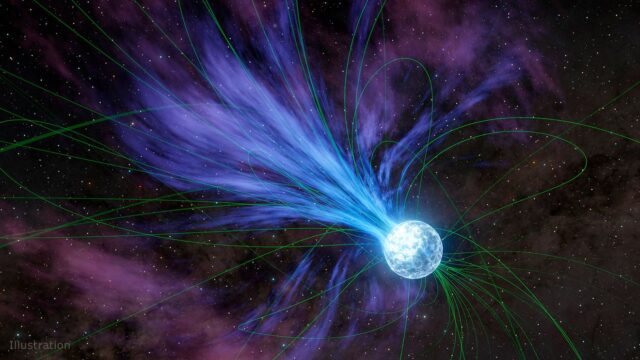When fast radio bursts (FRBs) were first detected in 2007, they were a complete enigma. As their name implies, these events involve a very brief eruption of radio emissions and then typically silence, though a few objects appear to be capable of sending out multiple bursts. By obtaining enough data from lots of individual bursts, researchers gradually put the focus on magnetars, versions of neutron stars that have intense magnetic fields.
But we still don't know whether a magnetar is a requirement for an FRB or if the events can be triggered by less magnetized neutron stars as well. And we have little hint of the mechanism that produces the burst itself. Bursts could potentially be produced by an event in the star's magnetic field itself, or the star could be launching some energetic material that subsequently produces an FRB at some distance from the star.
But now, a rare burst has provided indications that FRBs likely originate near the star and that they share a feature with the emissions of pulsars, another subtype of neutron star.
A lucky sighting
Both of these conclusions are based on the observation of a single FRB, termed FRB 20221022A, that was detected in October 2022. It was picked up by CHIME (Canadian Hydrogen Intensity Mapping Experiment). That observatory was built to look at radio emissions from different sources, but it turned out to be capable of staring at a very broad chunk of the sky and extremely good at identifying FRBs.
The event was relatively easy to localize, allowing it to be associated with a specific galaxy that is relatively nearby, at least in cosmological terms (about 200 million light-years away). Its proximity was critical for a couple of reasons. First, it meant that the radio waves that arrived at Earth were intense enough to allow various analyses of the properties of the burst. The second is that the photons of the burst spent relatively little time traveling in the space between galaxies. Instead, most of the influence matter has had on these photons comes from materials inside a galaxy—either the galaxy that hosts the source or within our own Milky Way.



 Loading comments...
Loading comments...
